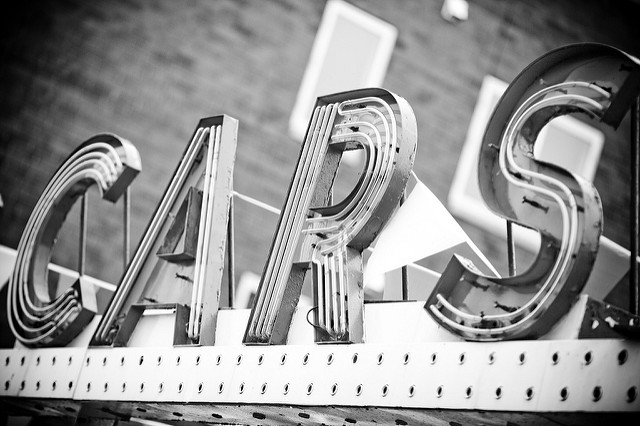
Filing bankruptcy often gives you a clean financial slate, but your credit scores take a serious hit. The most important factor that determines your credit score is your payment history. When you file bankruptcy, it means that you will not pay your creditors as agreed. For that reason, filing bankruptcy significantly lowers your credit score.
Furthermore, the record of the bankruptcy remains on your credit reports for many years. When you file for a Chapter 7 bankruptcy, it shows up on your credit report for ten years following the date of filing. In the case of Chapter 13 bankruptcy, it appears on your credit reports for seven years.
Whichever of the two bankruptcies you choose to file, any lenders you approach for financing can see the record of it in the public records section of your credit report. They will factor that information into deciding whether or not to provide you with a loan.
Upon completion of the legal process of filing the bankruptcy is complete, your credit report will show the bankruptcy and indicate that the debts you owed have been discharged. This means that the court has released you from the obligation of paying the debts.
When you apply for a loan, the lenders are unlikely to approve the application before the discharge of the bankruptcy. Once you’re done filing bankruptcy, you might think you’ll never be able to get a car loan again. That’s usually not the case, though. There’s often a way to get around a bad credit situation, get a car loan and get back on the road.
Getting A Car Loan After Bankruptcy
Rebuilding your credit after bankruptcy can be difficult. Even so, it’s possible to get a car loan. Once you receive a discharge in bankruptcy, getting a bankruptcy car loan is one effective way to improve your credit. The process is relatively straightforward.
As with other bad credit car loans, bankruptcy car loan lenders set specific requirements on employment, income and more for you to qualify for the loan. Keep the following tips in mind when looking for a bankruptcy car loan.
- Check Your Credit. Before visiting a dealership, review your credit score, ensure your credit reports are accurate and confirm that the discharge appears on your credit reports.
- Ask For the Right Amount. The less you borrow, the more likely the lender will approve your application. Consider financing a used but reliable vehicle to minimize costs.
- Maximize your Down Payment. This minimizes the amount you need to borrow. Subprime lenders often ask 10 percent of the car’s sale price or for $1,000 down, whichever is less.
- Get Cosigners. They can be a big help. Some lenders require bad credit borrowers to have at least one cosigner. However, make sure you and your friend or family member understand the implications before you ask them to risk their credit.
- Carry Your Discharge Paperwork. You can maximize your chances of getting your car loan approved by bringing along your discharge paperwork to the dealership. The credit bureaus may not have reported the discharge.
- Don’t Apply for the Car After a Bankruptcy Dismissal. You risk striking out. If your bankruptcy filing is unsuccessful, you may have to explore other options.
It’s possible to get a car loan even if you’re in an open bankruptcy. However, the process differs significantly from getting the loan following a discharge. It depends on whether it’s a Chapter 7 or Chapter 13 bankruptcy.

Getting an Auto Loan With a Chapter 7 Bankruptcy
Also referred to as liquidation bankruptcy, Chapter 7 bankruptcy involves the sale of your non-exempt personal assets to pay off debts. The process is usually quick, taking 3–6 months to discharge. A Chapter 7 bankruptcy filing appears on your credit reports for up to 10 years.
Getting an auto loan with an open Chapter 7 bankruptcy is rare but not impossible. After the 341 meeting with your creditors, you can apply for the loan, but lenders are unlikely to approve. The lenders may advise you to wait for discharge of the Chapter 7 bankruptcy due to its relatively short discharge period.
So, the best time to apply for a car loan with a Chapter 7 bankruptcy is after its discharge because lenders will be sure that the bankruptcy will not include the car loan. In any case, piling on more debt before the discharge may worsen your financial situation.
Getting an Auto Loan With a Chapter 13 Bankruptcy
Chapter 13 bankruptcy involves setting up a three- or five-year repayment plan for settling all or part of your debts under the court’s protection. Every month, you pay a specified amount to a bankruptcy trustee, who distributes the funds to your creditors.
With Chapter 13 bankruptcy, you have the opportunity to keep your assets. The bankruptcy appears on your credit reports for up to seven years. It’s possible to get a car loan during and after this period.
Lenders often respond more favorably to Chapter 13 bankruptcy than to Chapter 7 bankruptcy. You’ll likely need a car before the three or five-year repayment plan elapses. The process of getting a car loan with an open Chapter 13 bankruptcy is as follows:
- Obtain a sample Buyer’s Order. Identify lenders who are open to giving you a car loan during an open Chapter 13 bankruptcy and request a sample buyer’s order from a dealership that works with these lenders.
- Take It to Your Trustee. Give your bankruptcy trustee the sample buyer’s order and justify your need for a car. The trustee determines whether or not it’s acceptable depending on the loan’s potential impact on your repayment plan.
- The Trustee Files Motion To Incur Additional Debt. If your bankruptcy trustee deems the car loan acceptable, they file a Motion to Incur Additional Debt with the court, which in turn sends it to the creditors in your repayment plan. If they object, the court sets a hearing and may require you to attend.
- Receive an Order To Incur Additional Debt. If the bankruptcy court approves the motion, they give you an Order to Incur Additional Debt. The court may also make specific requests regarding your car loan, such as a maximum loan amount, interest rate and monthly payment.
- Seal the Deal With the Dealership. Give the court order to the dealership for its finance department to finalize the terms of your car loan.
Note that the sample order you get in step 1 must list all the details of your potential car loan for the court to evaluate. These include the loan amount, interest rate and car’s make, year and model.
Furthermore, the dealership must indicate “or similar” next to the car you select and the highest possible interest rate the lender may set. If the interest rate you qualify for is higher than the indicated rate or the vehicle is no longer available, the court can reject your motion. You may then have to restart the process.
Getting a Chapter 13 bankruptcy is more straightforward after its discharge. Send a car loan application to the dealership, which forwards it to the lender for approval. As with other bad credit auto loans, the lender sets the appropriate loan terms. Finally, select a car for which you qualify to receive a loan.
Identifying the Right Car Loan Lender
Many lenders offer car loans to people with bad credit. Research them extensively, taking into consideration factors such as previous customers’ reviews, the number of years the lender has been in the business, the lender’s interest rate range and more.
When looking for a lender, consider starting with your bank, another bank or a credit union. You can get recommendations from your bankruptcy attorney. They may point you towards some prospective legitimate lenders willing to provide auto financing to people in bankruptcy or who have just gotten out of it.
If your bankruptcy attorney doesn’t provide any recommendations and you are unable to get a car loan from an established bank, consider other sources but with caution. Use available online tools to determine whether you qualify for a car loan. However, make sure you research these alternative car loan lenders carefully before seeking financing from them.
Here are a few things to consider when looking for legitimate car loan lenders.
- Contact the Better Business Bureau (BBB). Check with the BBB to confirm that the company has a customer service line for answering questions and not only for leaving messages. Additionally, make sure it has a physical street address.
- Check With the Attorney General. Check with the attorney general’s office of your state to confirm that the lender has been lawfully registered.
- Be Wary of Warning Signs. Look out for red flags such as requests for wire transfer, requests for upfront fees in addition to down payments, and guaranteed loans no matter how bad your credit is.
Can Get Back on the Road
Whether you’re currently filing or have completed a Chapter 7 bankruptcy or Chapter 13 bankruptcy, you can still get a car loan. Contact an experienced Denver, Colorado bankruptcy attorney today and schedule a free consultation.
You can read reviews from our clients on our Google, Facebook, and Avvo pages!


